Chris Howard's Blog, page 28
July 1, 2020
The Moon and Mars. (The planet Mars is that bright point of...
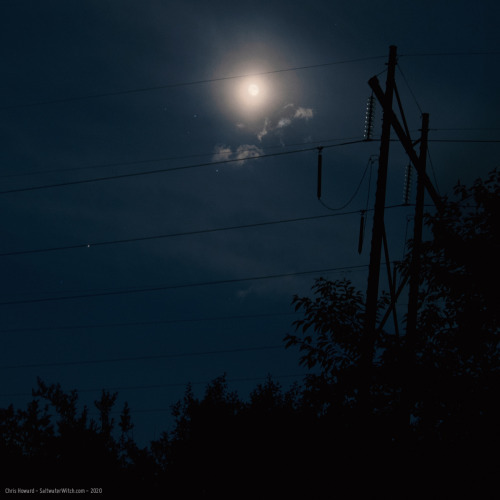
The Moon and Mars. (The planet Mars is that bright point of light that’s just touching one of the transmission lines to the left and lower than the moon).
June 20, 2020
Have you ever been framing in SGP or browsing Telescopius for...
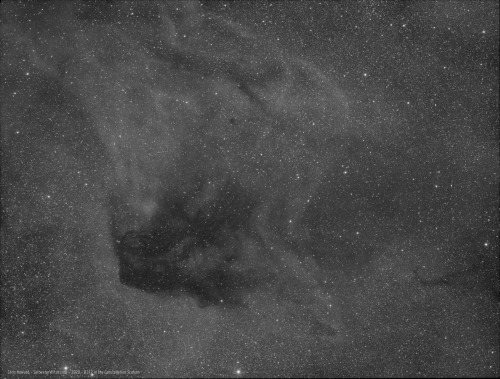
Have you ever been framing in SGP or browsing Telescopius for Messier 16, the Eagle Nebula or M17, the Swan Nebula, and looked over and saw that totally creepy arrow-shaped dark nebula–and thought, I want to take pics of that? Well, that’s B312. Let’s get started!
New video posted–got a bit funky with this one. Narrowband imaging run with the GT81 and Sky-Watcher EQ6-R Pro
https://youtu.be/FxtadQsxS3o
https://telescopius.com/deep-s…/object/192/b-312/dark-nebula
June 19, 2020
One of the dozen fireflies in the backyard paid me a visit around 1:30 in the morning. I was in the...
One of the dozen fireflies in the backyard paid me a visit around 1:30 in the morning. I was in the middle of capturing narrowband data for Barnard 312 in the Constellation Scutum, which is very low in the southern sky, around 30 degrees. https://SaltwaterWitch.com
Chris Howard - Official Home of Chris Howard, Author & Illustrator
June 17, 2020
June 16, 2020
Planning some test shots tonight with the WilliamOptics GT81 apo and the narrowband imaging train.
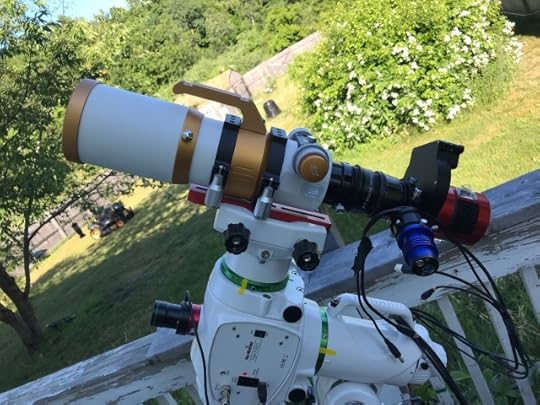
Planning some test shots tonight with the WilliamOptics GT81 apo and the narrowband imaging train.
June 14, 2020
Here’s a reasonably processed stack of 71 subs of IC 1396...
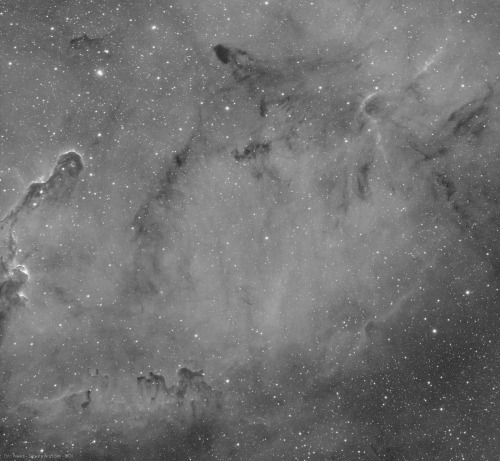
Here’s a reasonably processed stack of 71 subs of IC 1396 in the Constellation Cepheus, cropped to show some of the Elephant’s Trunk Nebula (structure on the left) and the clouds and filaments of dark interstellar dust (B161 is the large dark blob with wispy strands blowing off it toward the top) that drift in front of this massive region of ionized hydrogen—all that lighter gray stuff, basically everything in this frame except where it begins to thin out in the lower right. By “massive” I mean it spans 3 degrees in the sky. To put this size in perspective, the angle covered by our full moon is about 31 arcminutes or 1/2°. IC 1396 is 3° or 6 times the diameter of a full moon. And it really stands out in narrowband!
Side Note on Stacking: astro-imaging involves multiple steps, requiring many—I typically go with 20 - 100 Light Frames, which are the exposures you take of the astronomical target—the nebula, galaxy, IC 1396 in this case. (We say “sub-exposure” or “subs” because all of these will be combined into one primary exposure). Normally the Light Frames will be individually calibrated with additional exposures taken specifically to reduce or eliminate sensor read noise, fixed pattern noise, vignetting, dust, and other unwanted stuff. These are the Calibration Frames–Dark Frames, Flat Frames, Flat Dark Frames, and Bias Frames. Check out Cuiv’s video (of Cuiv, the Lazy Geek astro channel) for more on calibration frames: https://youtu.be/UmmTuIEW94M
June 13, 2020
And this is why I think we all need to get out under a clear and...
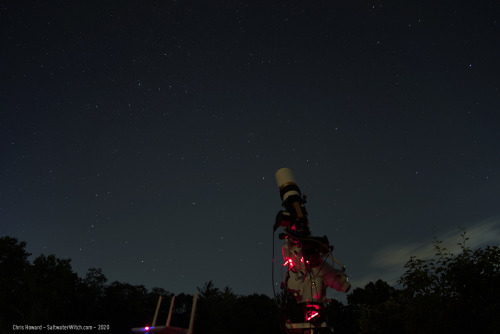
And this is why I think we all need to get out under a clear and relatively dark night sky once in a while. I was just looking up in wonder, setting the tripod with the D750 down once in a while to take a 30-second exposure. I wasn’t really thinking about what would be in the shot other than having my gear in the foreground–the focus isn’t great in this one, but that doesn’t really matter. It wasn’t until this morning, looking through a set of these, that I immediately saw Cassiopeia (that W asterism toward the top left) and the double star cluster in Perseus below. And from there my eye just follows that ramp of stars in the constellation Andromeda to the right. If you walk up those three stars angling out from the end of my scope (just to the left)–one more step and you’ll land on that softer smear of light. That’s M31, the Andromeda Galaxy. If you look along the left side of the scope where that brighter red LED light emerges, there’s a wedge of stars, like a slice of pizza, with the point closest to the scope. That’s the constellation Triangulum. There’s a dim dot of light up from the point star, angling toward the scope. That’s M33, the Triangulum Galaxy. All of this was in the sky above me–above all of us in the Northern Hemisphere. There’s so much more in this shot, but I would need to draw lines and write labels. What’s actually going in this shot–I mean, with my telescope, mount, cooled monochrome cameras and narrowband filters? I’m in the middle of taking 70 four-minute exposures of a large HII region in the constellation Cepheus, which is above Cassiopeia–partially, with some of it off frame. My astro blog: https://SaltwaterWitch.com
May 30, 2020
gusgrissom:
Dragon has achieved zero-g!
everythingspacex:
May 28, 2020
My micro-observatory project is starting to come...
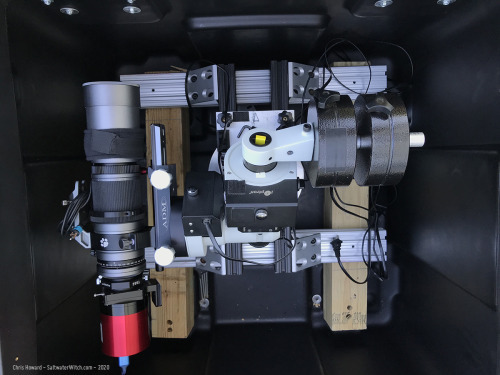
My micro-observatory project is starting to come together–now with video! My goal is to be able to set up a self-powered astrophotography system that can remain in place through any weather while protecting the equipment, and be operational and ready to image within a few minutes.












